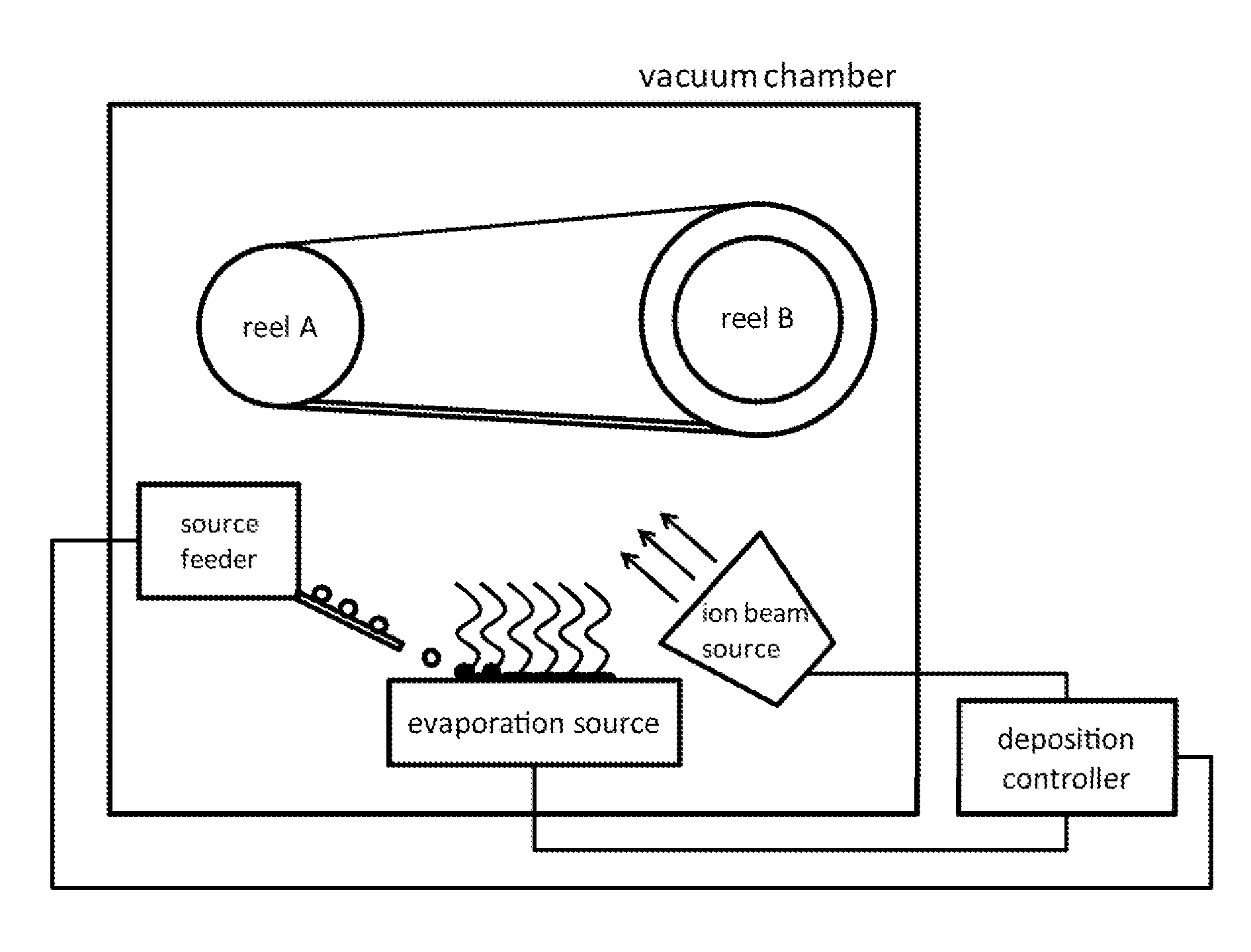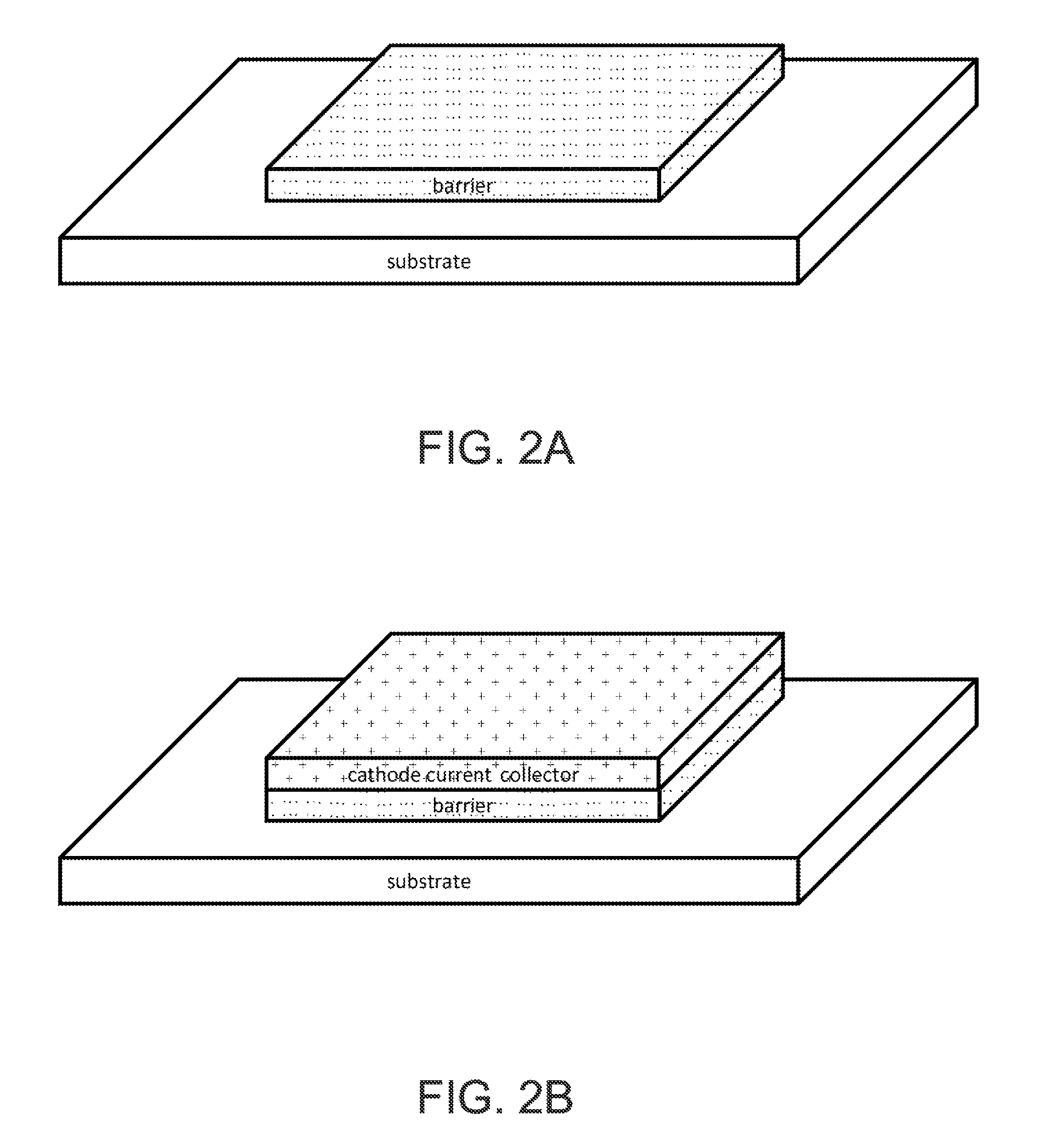Thermal evaporation process for manufacture of solid state battery devices
- Summary
- Abstract
- Description
- Claims
- Application Information
AI Technical Summary
Benefits of technology
Problems solved by technology
Method used
Image
Examples
Embodiment Construction
[0028]According to the present invention, processing techniques related to manufacture of solid-state electrochemical cells are provided. More particularly, the present invention provides methods for manufacture of electrodes (cathode and anode) and electrolyte materials by flash evaporation processes for continuous roll-to-roll production, and ion-beam assisted processes for adjusting the required layer properties.
[0029]Merely by way of example, the invention has been provided with a vacuum system configured for a multiple pass roll-to-roll coater, in which a substrate is coated with a sequence of steps by changing in direction of the movement of the substrate within a single vacuum chamber. In an alternative approach, the substrate may be moved in the same direction around the reels as a single pass deposition process, with conditions within the chamber periodically changed to result in the continuous build-up of deposited material over time. Alternatives can also be provided wher...
PUM
| Property | Measurement | Unit |
|---|---|---|
| Fraction | aaaaa | aaaaa |
| Fraction | aaaaa | aaaaa |
| Time | aaaaa | aaaaa |
Abstract
Description
Claims
Application Information
 Login to View More
Login to View More - R&D
- Intellectual Property
- Life Sciences
- Materials
- Tech Scout
- Unparalleled Data Quality
- Higher Quality Content
- 60% Fewer Hallucinations
Browse by: Latest US Patents, China's latest patents, Technical Efficacy Thesaurus, Application Domain, Technology Topic, Popular Technical Reports.
© 2025 PatSnap. All rights reserved.Legal|Privacy policy|Modern Slavery Act Transparency Statement|Sitemap|About US| Contact US: help@patsnap.com



